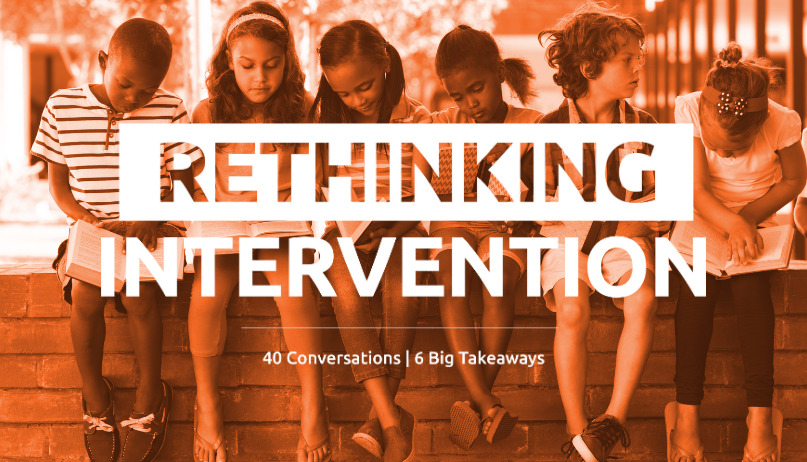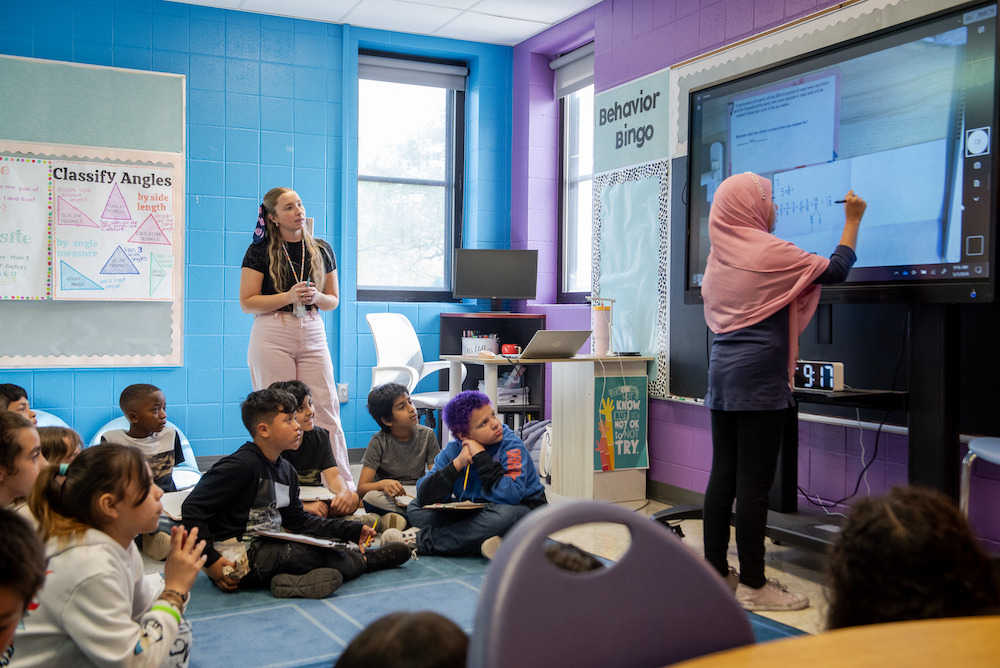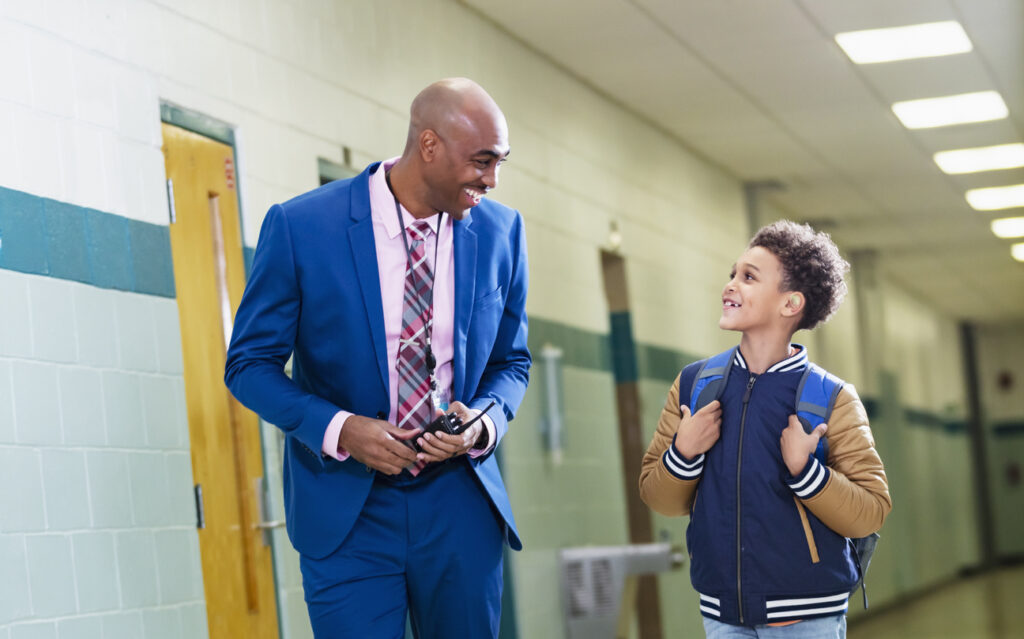
Rethinking Intervention
Update: 3/30/21
Shortly after I wrote post below, we launched the Rethinking Intervention project, with the aim of learning from experts and practitioners what drives and challenges intervention. What started as a small project became a survey course in what we know about how students learn and a perspective-changing series of conversations for me as an educator, a leader, a parent, and a person.
Once we stepped back to deeply process these conversations, we launched a video series built around the six big takeaways. Explore the full series here.
To date, we’ve spoken to 40 researchers, teachers, leaders, and content experts. Each conversation gives me tremendous hope about what we know and how much wisdom we have in our collective community.
–Emily Freitag
Initial post: 4/22/20
When I first started teaching 7th grade math, I gave students a diagnostic during the first week of school. It included questions across a range of grade levels, and the majority of my students struggled with questions from prior grades. So, I adjusted my district curriculum and spent the first month “remediating prior learning needs.”
Essentially, I spent a month teaching my 7th graders subtraction with regrouping (a 2nd grade standard) determined to make sure every single student mastered the concept. My logic was, “if they can’t subtract, they’re not ready for pre-algebra.”
It was a frustrating month for everyone involved, especially students who already knew how to subtract, and every week I spent on subtraction was a week I didn’t spend on concepts my students needed to be ready for 8th grade.
I wish that, instead of reacting to the diagnostic with a “stop and go back” mentality, I had reacted to the diagnostic with a “bolster foundational concepts while teaching new content” mentality. The root concept that needed some clarification was really about place value. Reminding my students what we know about the base ten number system was necessary, but I could have done that as the entry into lessons about integers.
If I had taken that approach, my students would have learned more math than they did that year. Reteaching subtraction for a month ultimately furthered inequity for my students.
I am hardly the only educator to have fallen into the pernicious trap of over-remediating. Studies have shown that students in poverty and African American and Latinx students in particular are much more likely to spend a disproportionate amount of their schooling on below–grade level concepts than wealthier or white students. These same studies have shown that, when given access to on–grade level work, students from all demographic groups perform equally successfully. Active biases about what my students were capable of, wrapped with a bow of good intentions, were unquestionably a part of what led me to make that instructional choice.
I also fundamentally misunderstood what learning entails. I thought of learning as a sequential, linear act, like a hiking trail going to the top of a mountain or a roadmap to a destination or a series of dominoes that fall one after the other. Logically, if you miss a domino, you should go back.
But everything we know about learning suggests these metaphors, and many others we use in education, are fundamentally flawed. Better metaphors would tap into the fact that students do the work of constructing meaning (i.e. teachers do not fill up student brains), and that each discipline has some load-bearing walls that are critical for building a solid foundation for learning. As long as those foundations are attended to and reinforced, students can (and should) be able to construct additional levels that expand their understanding and ensure they do not fall behind.
As educators and policymakers anticipate returns to school buildings, whenever that may happen, we want to have solutions ready to redress the impact of extended time out of school. As we prepare, it is more important than ever for us to take a hard look at what we do and do not know about how to intervene effectively and how to best accelerate student learning. Otherwise, we run the risk of the triple threat of expanded inequity: inequity was already there, the pandemic and time out of school makes it worse, and our response to increased inequity makes it even worse. We need to be sure the treatment for the problem of expanded inequity does not slow the learning trajectory for the very students who need acceleration.
Empirically, we know a few things about how to accelerate learning in each subject, but there are many unknowns. More challenging than the unknowns are the many competing models and agendas based on differing learning theories: the personalized learning camp, the social-emotional learning (SEL) camp, the high-quality instructional materials camp, the constructed meaning camp, the learning science camp. These camps and agendas are not helpful to schools right now; they are confusing. The leaders I know desperately want to know what to do. They are asking: “What works? Give me simple frameworks I can use to lead my team.”
The question on the table is: What does and does not accelerate student learning, and what can school leaders do to be ready to help students when school returns?
I have some theories that boil down to “provide more time, more love, strong instruction, and more people watching out for students.” But I want to wade into the research, the debates, the tensions, and the theories in search for common ground.
Over the next several weeks, our team at Instruction Partners is going to dig in with content experts, researchers, and leading practitioners to better understand what we do and do not know about intervention and accelerating student learning. We will publish a series of posts and interviews with a range of voices and guest speakers, wading into questions about testing, policy frameworks, lessons from research, and examples and non-examples from best practices.
I have personally held various allegiances and identities at different times. I commit to release my preconceptions and find practical solutions that will work for schools. Our goal over the next six weeks is to put forth recommendations for what leaders can do to prepare to accelerate student learning in the recovery and aftermath of this time of interrupted schooling.
One of the greatest joys of working in this field is seeing the total commitment and learner orientation that educators bring to their work. I have repeatedly seen that teachers and leaders are always willing to share good ideas that serve students well, and that those same people are open to acknowledging what does and does not work. These qualities are why I am an optimist about education.
Now, more than ever, we need to come together and learn from each other in ways that will ready us for the recovery task ahead. Clearly my “stop and go back” non-example cannot be the prevailing approach. Together, let us find new metaphors, simple models, and new understanding of each other as we seek to support students.
If you have thoughts we should know about or examples of excellence you want to share, email emily.freitag@instructionpartners.org. We look forward to the journey; one step at a time, together.


